The vehicle suspension is collectively referred to as the elastic coupling device between the frame (or body) and the axle (or wheel). Its role is to elastically connect the axle and frame (or body) to ease the impact force when the vehicle is travelling; to ensure that the load in good condition and comfortable exprience of the passengers; reduce the introduction of vibration from elastic system, improve handling and stability, make car driving a more joyful experience; suspension system also bear to pass the vertical force, the longitudinal reaction force (driving and braking force) and the lateral reaction force caused by these forces to the frame (or body), to ensure that the car ride comfort; when the wheel beating relative to the frame (or body), especially when turning the steering wheel, the trajectory shall meet certain requirements, so the suspension also counted for this responsibility.
the suspension system in a modern car is one of the important assembly. Reasonable choice of suspension structure and performance parameters, have a great impact directly on the car ride, handling stability and comfort.
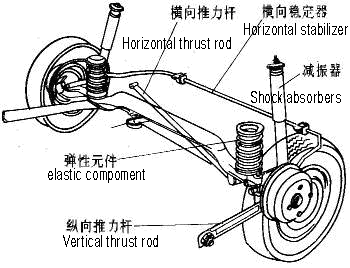
Passive suspension and active suspension
Divided by forms of control, there are two kinds of suspension: passive suspension and active suspension.
Passive Suspension
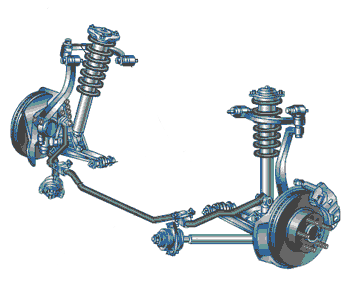
Most cars running on the road use passive suspension, constitute by the elastic component-oriented institutions, as well as the shock absorber and mechanical parts.
Active Suspension

Active Suspension was applied on some luxury cars like Mercedes Benz S350, AUDI A8, Porsche Cayenne etc.
Active suspension can dynamically control the vertical vibration and body posture, automatically adjusts the suspension stiffness and damping according to road and driving conditions.
Independent suspension and non-independent suspension
According to the different suspension types of automobil orientation institutions, a vehicle suspension system can be divided into: independent suspension and non-independent suspension. from the picture below, you can easily find the difference.
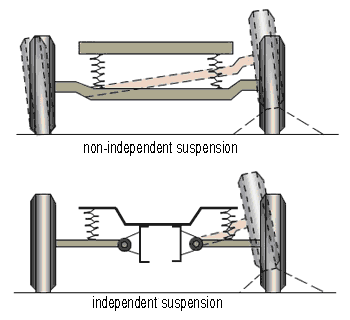
Non-independent suspension

Non-independent suspension is widely applied on heavy duty vehicles, in that it can bear big load and much stronger than independent suspension. the wheel is installed in both sides of an overall axle, axle connect to the frame(or body) via suspension. The suspension structure is simple, reliable power transmission, but shock and vibration from the two wheels affect each other. This kind of suspension is generally used for trucks, buses and other vehicles.
Normally there are two type of non-independent suspension.
Independent suspension
Each wheel mounted on the body or the axle through a seperate suspension , disconnect type axle was applied in this case, with a section connect to the frame (or body) of the vehicle; suspension on both sides of the wheels bear the impact independently of each other; buffering and shock absorption are much better to ensure comfortable ride. but the suspension structure and steering system was complicated. Independent suspension mainly apply on passenger car, buses and off-road vehicle.
Currently mainly 3 types of independent suspension are widely used: double wishbone, McPherson , and oblique single-arm style.
 Double wishbone
Double wishbone

The upper and lower arm are different in length, with appropriate length ratio, the wheel and kingpin angle and tread will merely change. This independent suspension has been widely used in the front wheels of cars.The double wishbone arm is A-shaped or V-shaped. the upper V-shaped arm keep a distance from the lower V-sharped arm, and respectively, mounted on the wheel and the other end mounted on the frame (or body).
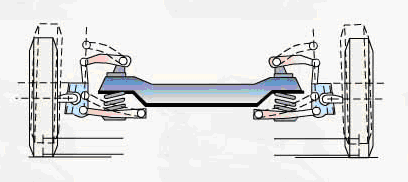
The upper arm shorter than the lower arm. When the wheel move vertically up and down, the upper arm movement angle is smaller than the lower arm, which makes the upper end of the wheel move inward and outward slightly, but the lower part merely move. This structure helps to reduce tire wear, and increase car ride comfort and directional stability.
 McPherson
McPherson
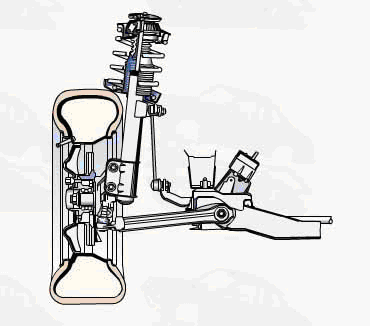
This suspension is frequently used in cars. McPherson suspension use shock absorber as a strut to guide wheel beating, and mount together with coil spring. This suspension removed the upper arm and use rubber bearings, allowing the upper part of the strut to make a little angular movement. This structure assure bigger space of the engine room, conducive to the engine layout, and lower the car's center of gravity. When the wheel beating up and down, the SAI/KPI will change dynamically, this problems can reasonably be resolved by adjusting the truss design and layout.
 oblique single-arm style
oblique single-arm style
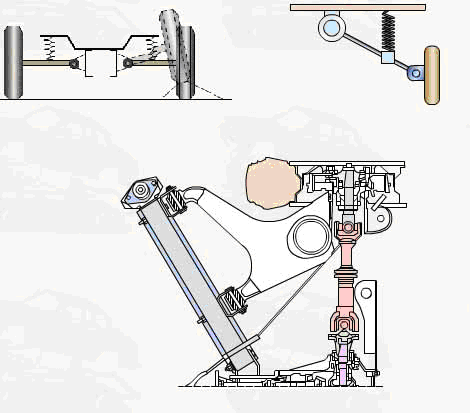
This suspension is a compromise of single horizontal arm and single trailing arm independent suspension. The swing arm move around an axis that maintain a certain angle to the vehicle longitudinal axis, set the appropriate angle to meet the vehicle handling and stability requirements. This suspension is suitable to do the rear suspension.
A easy way to understand the structure of suspension
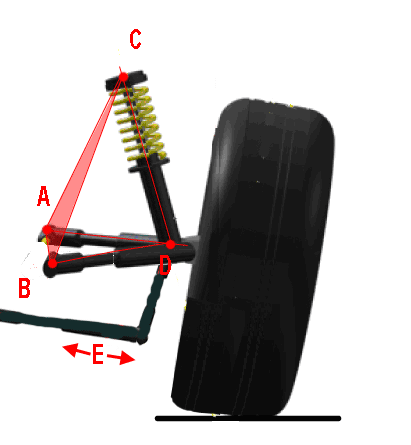
There's a few other kind of suspension types, and frankly speaking, its not easy to remember them all, so we have an idea to make it simple, check the picture below:
Point A, B, C forms a plain surface ( 3 points fix a plain surface, we all know it), image the distance from point A,B,C to the center of the wheel are fixed, so we will have fixed points D. if adjust one or two of the points among A,B,C, then the point D will move at the desired direction. in real wheel alignment adjustment, you might can find exact point A,B,C visually, but in more cases, you have to draw the image in your head where the points A,B,C will be. you might notice there's a E in the picture, yes, it represent the steering. in actually training, we use this picture to explain to customer, and its really helpful.
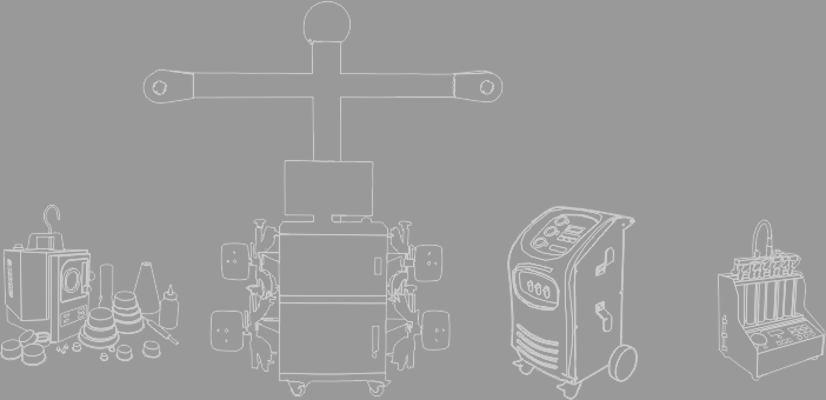





 Double wishbone
Double wishbone


 McPherson
McPherson

 oblique single-arm style
oblique single-arm style


